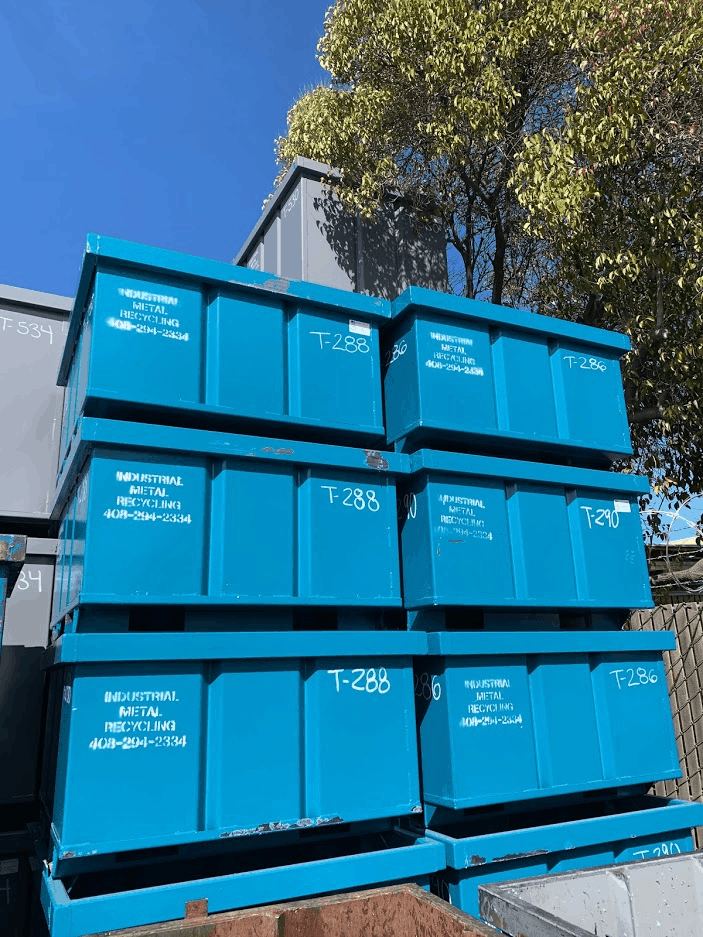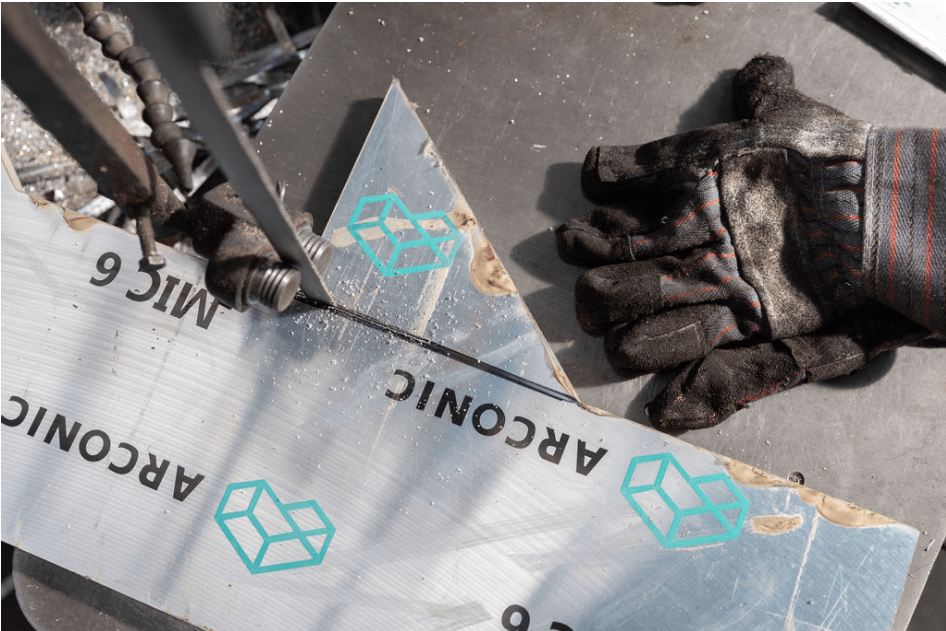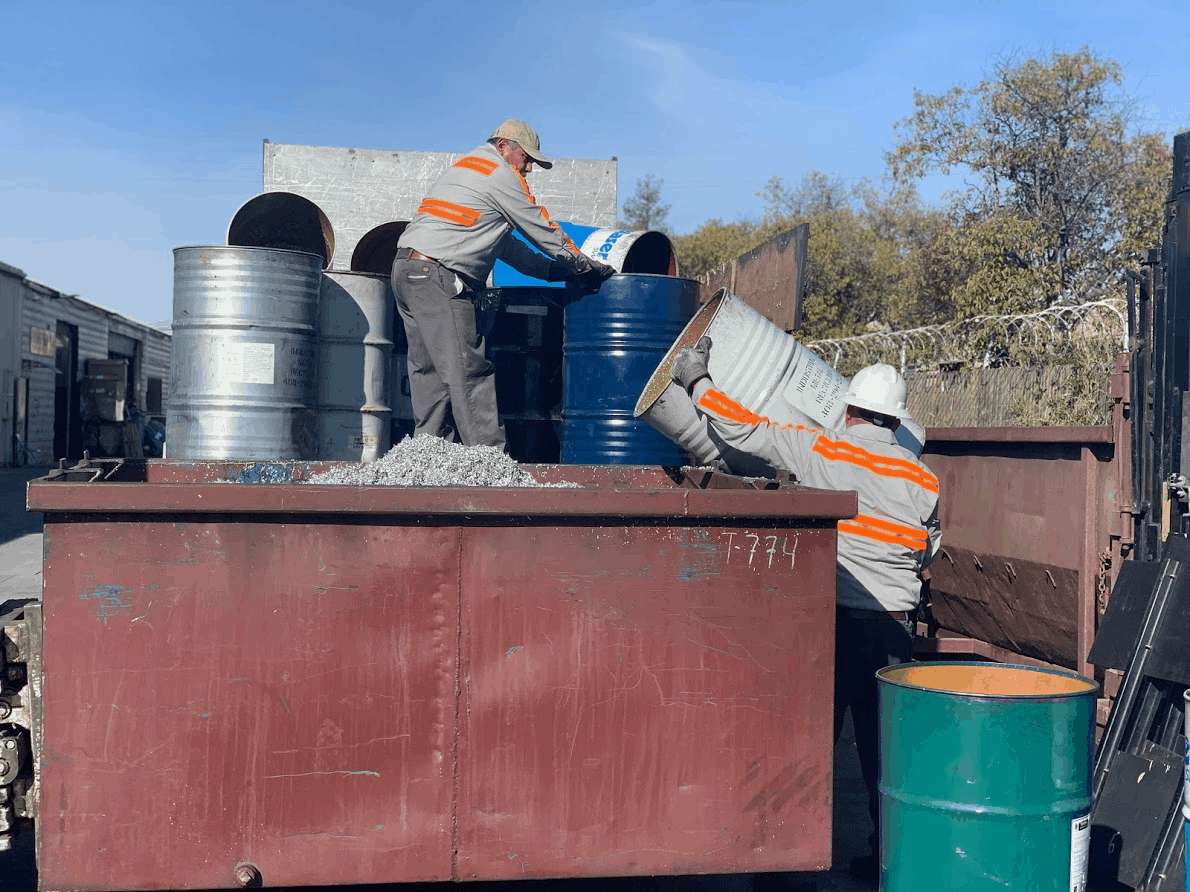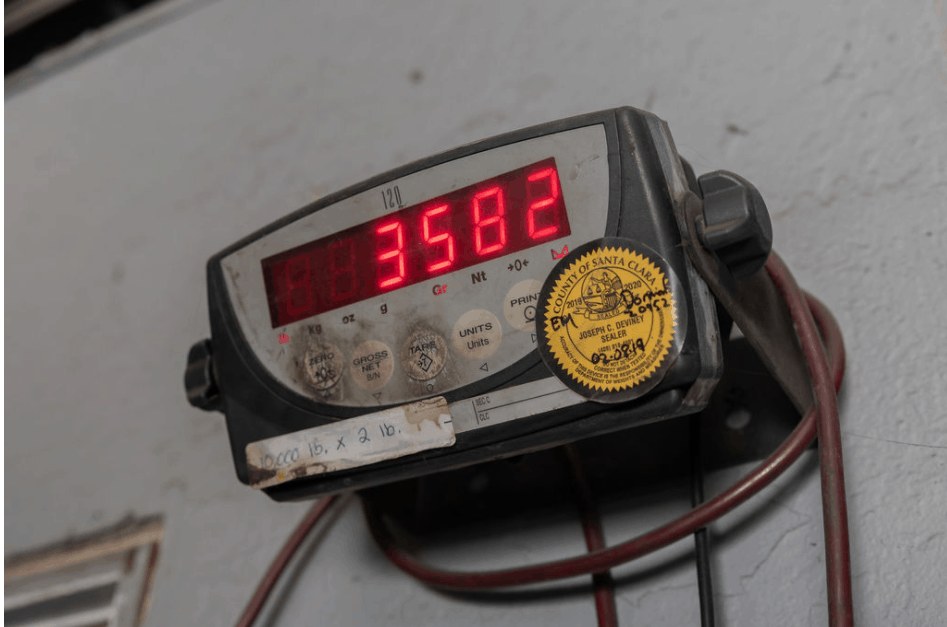As you may already be aware, many metals can be recycled repeatedly without degradation to their chemical and physical properties. Steel is the most recycled metal because of its widespread usage in buildings, automobiles, industrial machinery, railroads, ships, farm equipment, consumer goods, etc. Aluminum, copper, brass, stainless steel, titanium, and high-temp alloys are also prime candidates for recycling.
If you’re regularly creating waste metal as part of your production process, don’t already recycle, and have been considering a recycling service, let us provide some guidance regarding the ideal waste metal recycling process and how you can financially benefit from it.
Waste Metal Recycling Is a Win for You and the Environment
Compared to the process of mining materials, transporting, refining, and melting raw materials, less energy is required to convert scrap metal into usable remnant metal. Remnant metals are leftover pieces of metal that can be still be used. By avoiding most of those raw material manufacturing steps, energy consumption and greenhouse gas emissions are significantly reduced.
The recycling process for waste metal created during manufacturing is significantly simpler than the recycling process for metals obtained from already-manufactured products or demolished structures. The chips, cuttings, and remnants, known as “prime,” “prompt,” or “new” scrap metal that result from your manufacturing processes are so much easier to recycle. They’re clean and are easier to collect and transport. These are the ideal type of waste metals that recycling companies are looking for. If you are regularly generating this kind of scrap, you can be turning this scrap into money!
The more waste metal you can recycle, the better for the environment. There are also significant benefits—financial and operational—for your business in a recycling process that makes the best use of waste metals.
Don’t Let Logistics Keep You from Realizing the Benefits
For many manufacturers, fabricators, and welding or machine shops, what’s the biggest deterrent to efficient waste metal recycling? Logistics. For example, if you are located in San Jose or another similar city in the San Francisco Bay Area, you might not be sure where you can even bring scrap metal. Or, when you’re focused on meeting production schedules, managing the collection, storage, and transportation of waste metal off-site yourself can be a less-than-efficient task.
Let us explain the key steps that help you make the best use of waste metals you generate in your manufacturing operations and how to simplify the process of disposing of your scrap and get paid for it.
Start with the Right Recycling Containers
An efficient waste metal recycling process begins with collection services that are tailored to your individual needs. It starts with the recycling containers. An experienced waste metal recycling service will assess your recycling volumes, the types of metals to be recycled, and the space that containers need to fit into. With that information, they can recommend the appropriate leak-proof containers to handle your waste metals and production volumes. Typically, containers are available in the following sizes:
- 55-gallon drums to collect chips from a single 3-axis CNC machine.
- 4 x 4 or 4 x 6 forklift-compatible containers to handle a week’s worth of cuttings from high-volume lathes.
- Roll-off containers to handle scrap from a massive production run.
In certain instances, depending on the volume and value of the scrap metal, fabricating a custom container to collect high volumes of scrap directly from manufacturing equipment that standard-sized containers don’t fit may be the most efficient way to manage that scrap. A competent recycling service can coordinate the design, manufacturing, and delivery of any custom or standard containers required. Containers can be made to fit chip conveyors as well as be put on wheels to easily move in and out of difficult spots.

Minimize Space Occupied by Recycling Containers
Although you can turn waste metal scrap into dollars, the space occupied by recycling containers shouldn’t be occupying space that could be used for production processes. Real estate in the San Francisco Bay Area, for example, is expensive and you want to use every square foot for production activities that generate ROI.
An experienced waste metal recycling service should work with you to calculate the right number and size of the container(s) needed and determine a pickup schedule that ensures waste metal containers aren’t taking up valuable production space in the shop or yard.
The ideal waste metal recycling process carefully balances your recycling volumes, container space, and pickup schedules to ensure you always have the right recycling capacity. And in the event you generate larger volumes of waste metal than usual, that shouldn’t be a problem. A call to your provider can have a full container quickly swapped out with an empty.
Get Paid for Your Waste Metal
For the reasons mentioned above, “prime” waste metal has good value in the recycling industry. If you’re not properly recycling chips, cuttings, trimmings, and remnants, you’re throwing money away. A competent waste metal recycling service will accurately weigh your containers and contents (using state-certified scales) to ensure you receive fair market value for recycled metals.
| Science Fact: You can earn extra cash by recycling waste metal, as many scrapyards pay for scrap metal based on its type and weight. |
The Ultimate Waste Metal Recycling Process
In many manufacturing processes, usable metal remnants from cut bar stock or plate have greater value than just scrap. Look for a waste metal recycling service that will pay you fairly for these usable pieces. You’ll get a higher value for these in comparison to chips. These pieces can be cut, have the odd edges trimmed, and turned into useful metal inventory sold at prices well below the cost of new metals.
These pieces are perfect for many special or one-off manufacturing projects. In the spectrum of waste metal recycling methods, this is the ultimate recycling process. This method eliminates transportation of waste metal back to a mill, energy expended or environmental impact from melting and molding, and any other energy-consuming processes required to produce the final product.

Common Metals and Their Recycling Processes
Take a look at the recycling processes of these common metals below:
| Metal Type | Collection | Sorting | Shredding | Melting | Purification |
| Aluminum | Collected from consumer products, construction materials, and packaging. | Separated from other metals using eddy current separators. | Crushed into small sheets or bales. | Melted in specialized furnaces at around 660°C. | Often involves electrolysis to remove impurities. |
| Copper | Gathered from electrical wires, plumbing pipes, and roofing materials. | Sorted manually and by color; heavier than aluminum. | Shredded into smaller pieces for efficiency. | Heated in a furnace up to 1085°C. | Purified using methods like electro-refining to achieve high purity. |
| Steel | Sourced from appliances, vehicles, and construction. | Magnetic separation from non-ferrous metals. | Compacted and shredded into small pieces. | Melted in a high-temperature furnace (around 1370°C). | Includes processes like oxygen and argon purging to remove impurities. |
| Iron | Comes from old machinery, vehicles, and building materials. | Separated using magnets due to its ferrous nature. | Shredded into small fragments for easier processing. | Requires high temperatures (around 1538°C) for melting. | Purified through methods like slag formation to remove contaminants. |
Tech Advancements That Maximize Metal Recycling Profits
The scrap metal recycling process has been revolutionized by technological advancements, significantly enhancing the efficiency and profitability of recycling metals. These innovations are particularly beneficial for individuals and businesses looking to capitalize on the value of scrap metal. By leveraging modern technologies, they can optimize their efforts and potentially increase their earnings from recyclable metals. Understand the role of technological innovations in scrap metal recycling and how they’re reshaping material recovery, making it faster, more accurate, and environmentally responsible.
One of the key advancements is in automated sorting systems. These systems use sensors and magnets to accurately separate different types of metals from mixed scrap metal piles. This precision in sorting not only streamlines the process but also ensures that a higher quality of recyclable metals is obtained, which can fetch a better price at the metal scrap yard. Individuals and businesses can invest in or partner with facilities equipped with such technology to improve the purity and, hence, the value of their scrap metal.
Another innovation is in the area of metal analysis tools. Portable analyzers, for instance, enable quick identification of various metals in scrap metal. This technology allows for more efficient and precise sorting, ensuring that valuable metals are not overlooked. By utilizing these tools, scrap metal collectors can accurately categorize their metals, ensuring that they get the best possible price for each type of metal at the scrap yard.
Furthermore, recycling metal advancements, like enhanced melting and purification techniques, have made it possible to recover metals from scrap with minimal energy usage and environmental impact. These improvements not only make the process more sustainable but also more cost-effective. Scrap metal collectors who stay informed about these advancements and adapt accordingly can benefit from lower processing costs and higher returns from their scrap metal.
Incorporating these technological innovations into the scrap metal recycling process streamlines the workflow and maximizes the economic benefits of dealing with scrap metal. As the technology continues to advance, the potential for profit in the scrap metal industry is likely to increase, making it an even more attractive venture for those involved in collecting and processing scrap metals.
Make the Best Use of Your Materials
Industrial Metal Service has its roots in recycling, and in over two decades of providing waste metal recycling and associated services to manufacturers, fabricators, and machine shops, we’ve recycled and sold 1.1 billion pounds of metal. We’re continually focused on improving the efficiency of the waste metal recycling process on behalf of our customers.
 Angle
Angle Cast Plate
Cast Plate Diamond Plate
Diamond Plate Flat Bar
Flat Bar Plate
Plate Round Bar
Round Bar Square Bar
Square Bar Square Tubing
Square Tubing Round Tubing
Round Tubing Angle
Angle Channel
Channel Diamond Plate
Diamond Plate I Beam
I Beam Round Bar
Round Bar Sheet
Sheet Square tubing
Square tubing Round Tubing
Round Tubing Rectangular Tubing
Rectangular Tubing Plate
Plate Rectangular Bar
Rectangular Bar Rectangular Tubing
Rectangular Tubing Round Bar
Round Bar Sheet
Sheet Square Bar
Square Bar Square Tubing
Square Tubing

